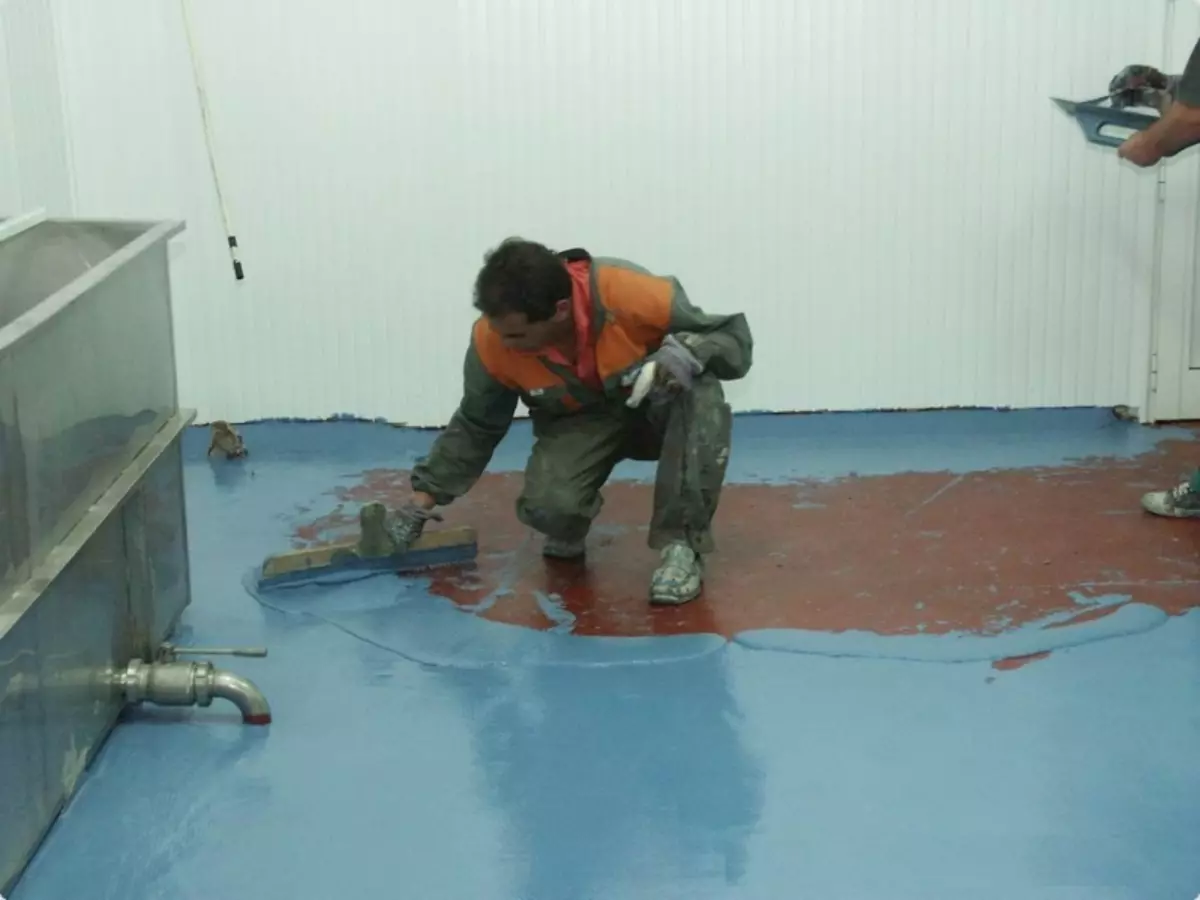
The waterproofing of the floor under the tie is made on top of concrete to prevent the penetration of dampness from basement in residential rooms. Also, waterproofing under the screed can protect the floors from the penetration of moisture in the bathrooms, in the kitchen, bathrooms.
In the modern market there are a large number of all kinds of protective materials for sealing floors. For example, the liquid glass for waterproofing is used as a coating, the inlet waterproofing of the floor is carried out with the help of rolled materials. In this article, consider how to make floor-insulating the floor in the apartment: types of insulating materials and technology of applies.
The need for sealing floors
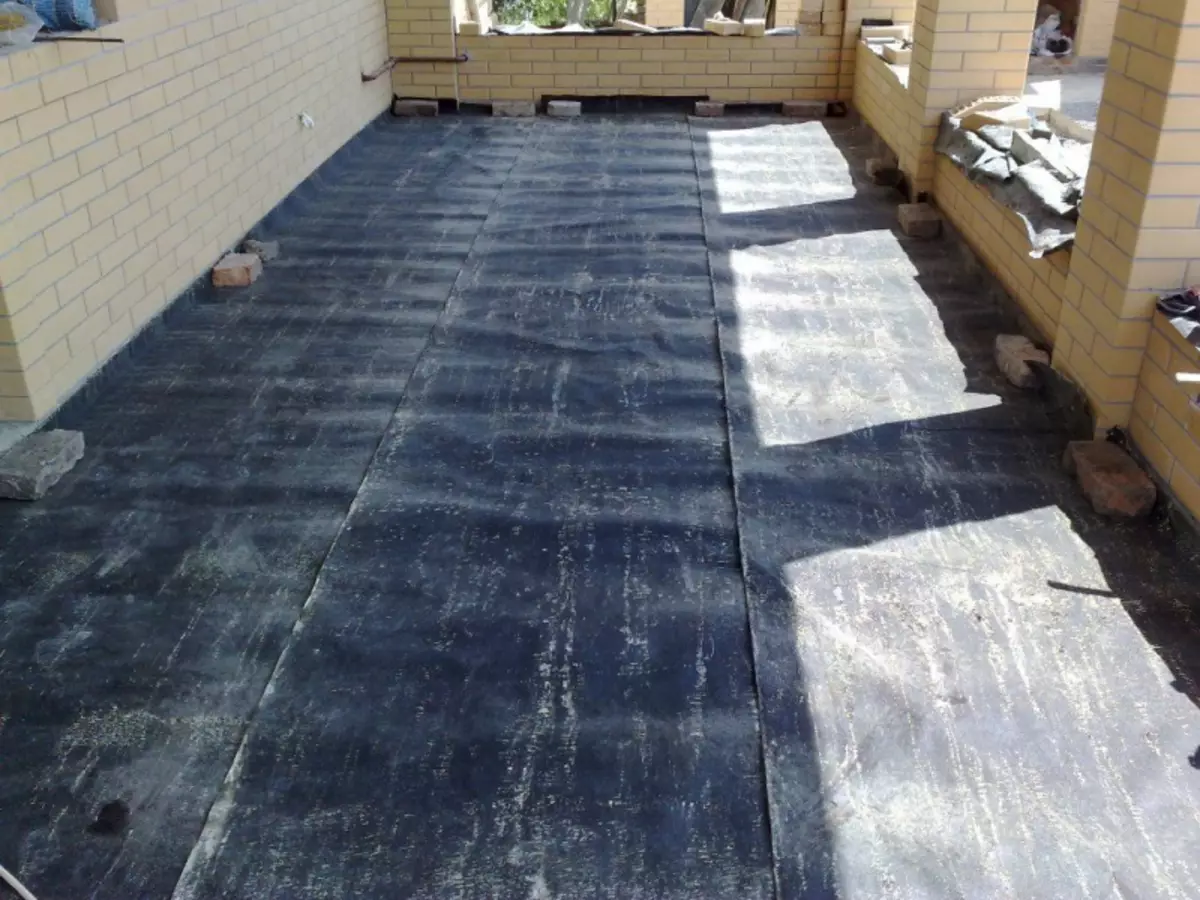
Quality insulation will allow preserving overlaps from exposure to water with force majeure situations
Many residents are sufficiently frivolously belong to the floorproofing device of the floor. Meanwhile, the protection of the floors from the penetration of moisture is necessary for a variety of reasons. In an apartment building, this makes it possible to protect inter-storey floors from water with various force majeure situations.
All the inhabitants of high-rise buildings familiarize the situation with the flooding of the lower apartment with tenants from above. A similar incident, despite the lack of malicious intent, is able to spoil relations between neighbors for a long time.

Dripping ceiling spoil relationships with neighbors
And about financial compensation to flooded neighbors - in general, a separate conversation, especially if it was hopelessly spoiled by expensive repair or dear furniture damaged. But all these trouble would allow to avoid waterproofing of the floor in the apartment before the tie.
Waterproofing floor in a private house prevents moisture penetration into a residential area from the basement or basement. This is especially true if the house is built on a plot with a high level of groundwater or with insufficiently well-produced waterproofing of the basement walls.
In this case, infiltration of moisture vapor is likely to the upper rooms, which can lead to increased dampness.
Types of waterproofing
Waterproofing in front of the tie can be three species depending on the technologies used and materials.Refractory
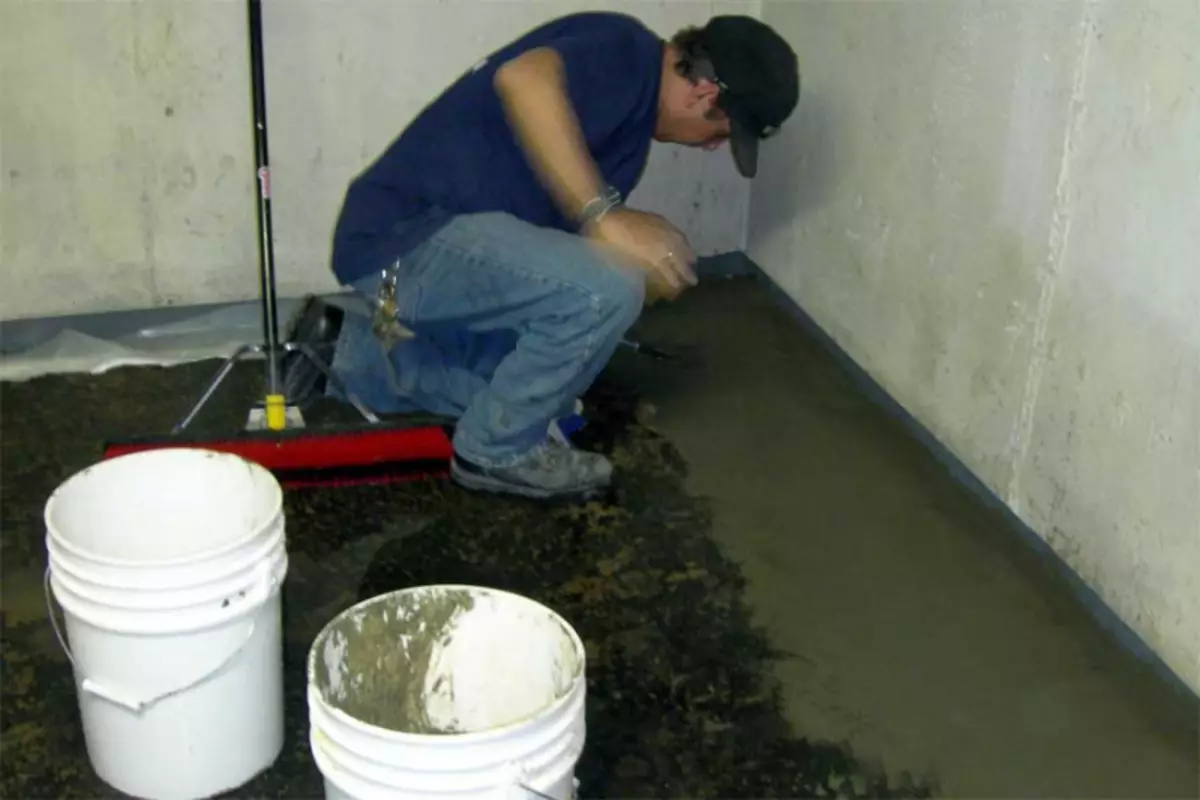
Bituminous solutions well seal surfaces
It is based on an oxidized bitumen with various organic and inorganic additives: rubber crumb, plasticizers, latex, etc. They are intended to improve the flow of the composition when working with it and increase elasticity after it is frozen.
Also additives make it possible to increase the adhesion of the coating material with the base of concrete. It is used for coating waterproofing liquid glass, bitumen and polymer mastic.
In addition to the fact that the coating compositions provide increased protection of inter-storey floors from the flows, they prevent the floors and the tie of concrete from the cracking, by performing the role of the reinforcing frame.
Occake
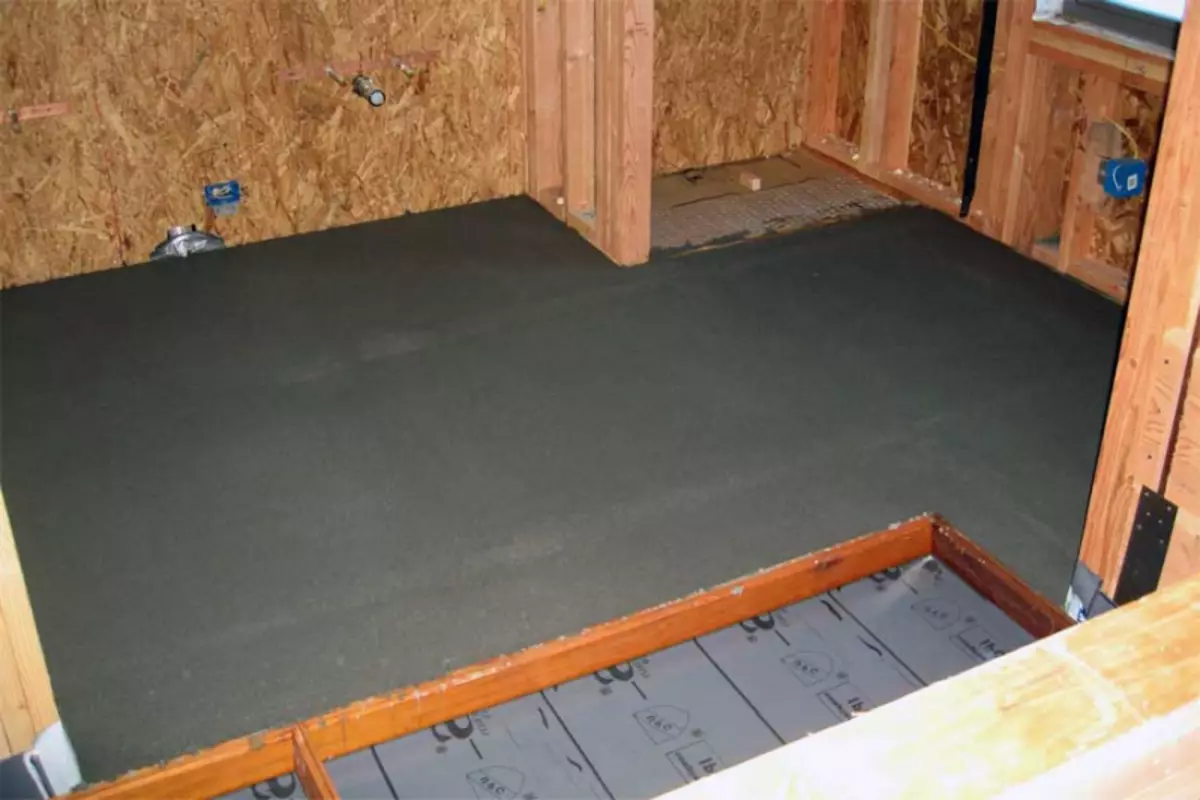
Equal waterproofing of the floor screed is performed using rolled materials. The composition of such materials may include reinforcing inclusions of fiberglass and polymers.
For easy installation, some rolled materials are produced in a self-adhesive version.
The flooded materials for waterproofing of the floor are attached to the base of concrete using special open-flame burners.
Combined
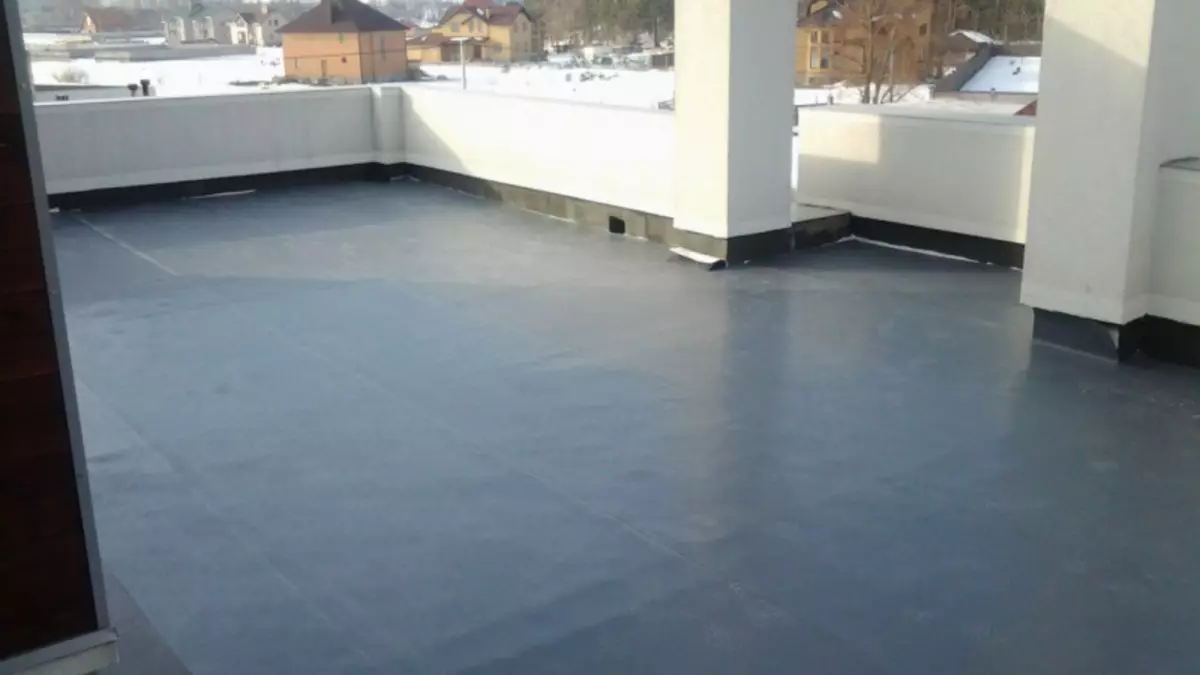
Combined waterproofing applied with high humidity
Article on the topic: Calculation of thermal curtain performance
Such waterproofing of a concrete screed is used to maximize the protection of overlapping from dampness. It is necessary with increased dampness in the basement or basement, or to prevent water flow through overlaps in bathrooms and kitchens.
The combined option provides for the use of inlet and coating variants, while the waterproofing of the screed can be produced 3-4 layers.
Types of insulating materials
Waterproofing materials for the floor differ in a large variety. They have various technical specifications and scope, so before buying you need to carefully read the instructions for using them.Rolled materials
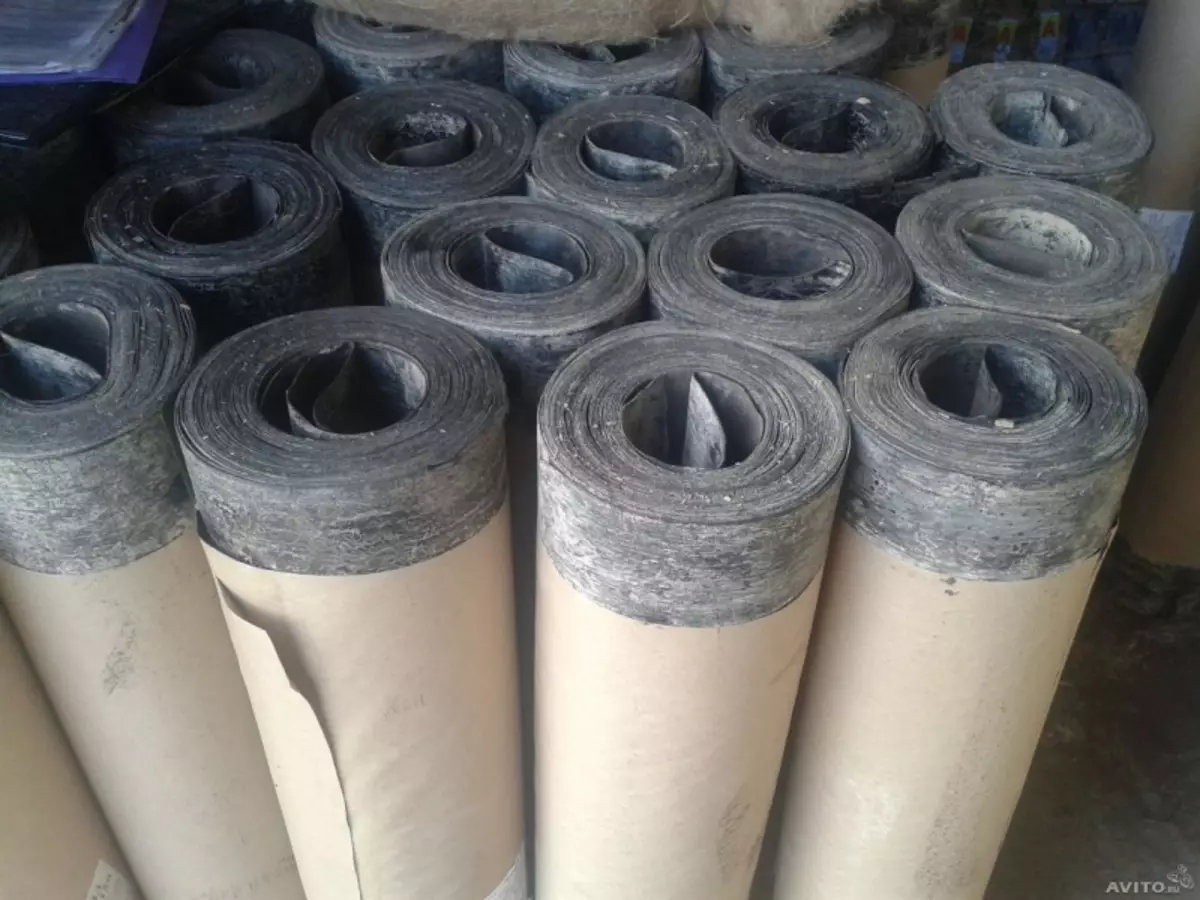
Ruberoid is cheap and reliable
Such insulating materials include the well-known runneroid, as well as its modern analogues - hydroizol, philip, isoplast, etc. They are sufficiently dense materials delivered in the form of rolls.
A similar option can be used both with wooden floors and with concrete floors. Among the advantages of rolled materials should be called low cost and ease of use.
The usual rubberoid is not recommended for use in premises with increased requirements for insulating properties (bathrooms, bathrooms, kitchens).
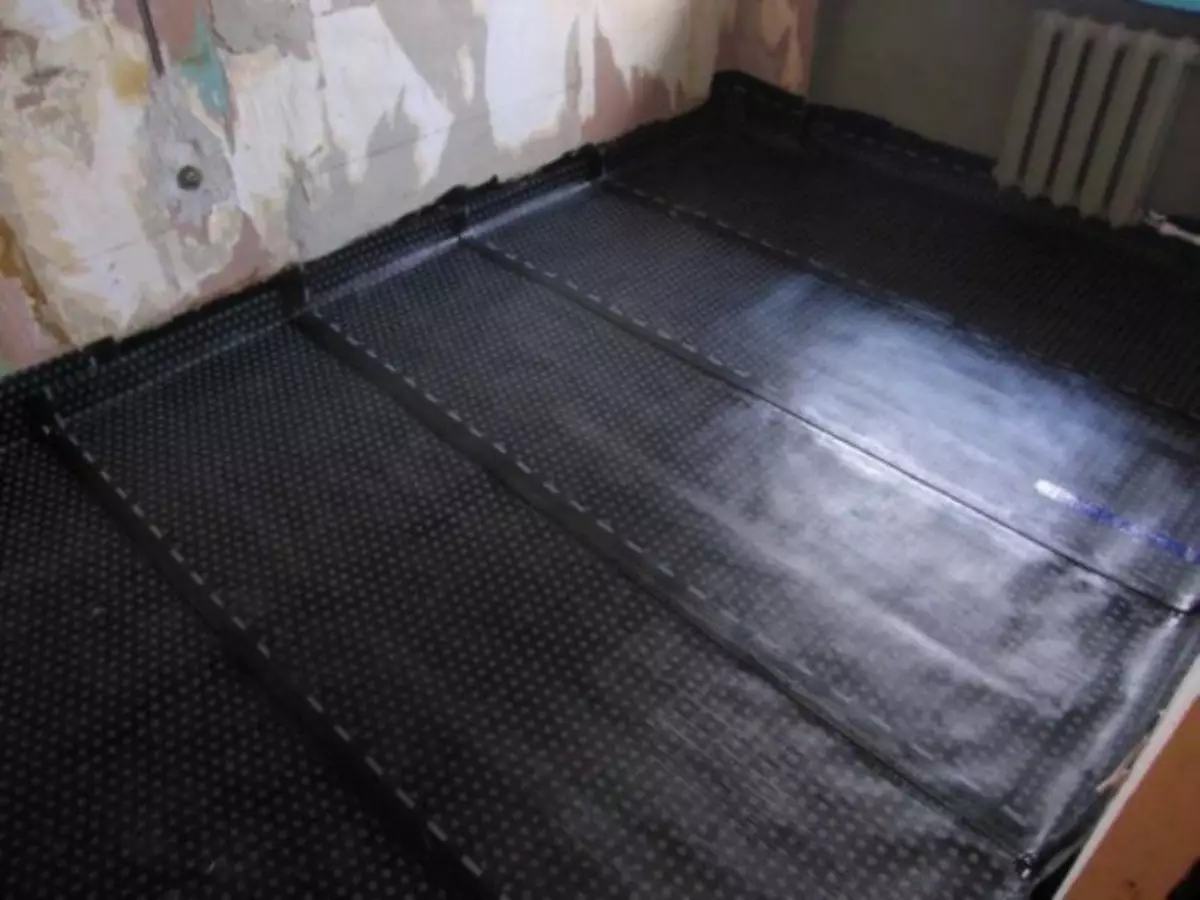
Roll materials are usually attached to glue or with burners
The fact is that it is based on the usual cardboard impregnated with bitumen, so the term of its operation in conditions of constant humidity is limited 2 to 3 years.
For such premises, modern rolled materials should be used, which are based on polymer components.
Roll isolation on the floor can be attached in several ways:
- with the help of adhesive compositions - bitumen and polymer mastic;
- heating the surface with an open flame burner;
Mounted materials
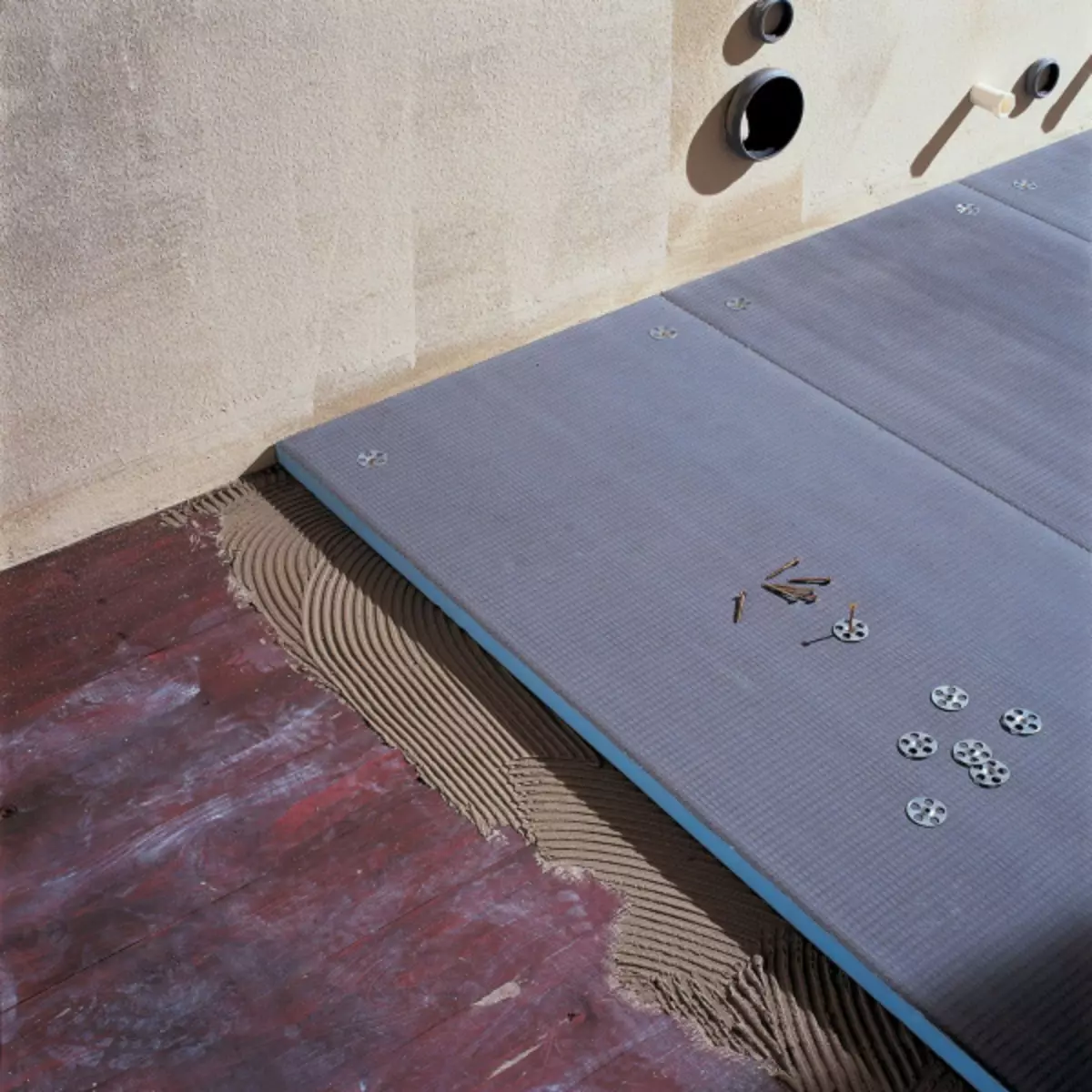
They are shields made of polymers, less often - sheet metal.
This isolation is installed on the floor using anchors or dowel-nails.
From above, shields are wrapped with water-repellent mastic, joints between them are especially thoroughly.
According to the technology of laying to the same type of isolation and rolled bentonite mats.
In residential apartments, such technology is rarely applied, the main area of its use is the production and commercial premises of a large amount.
Bulk isolation
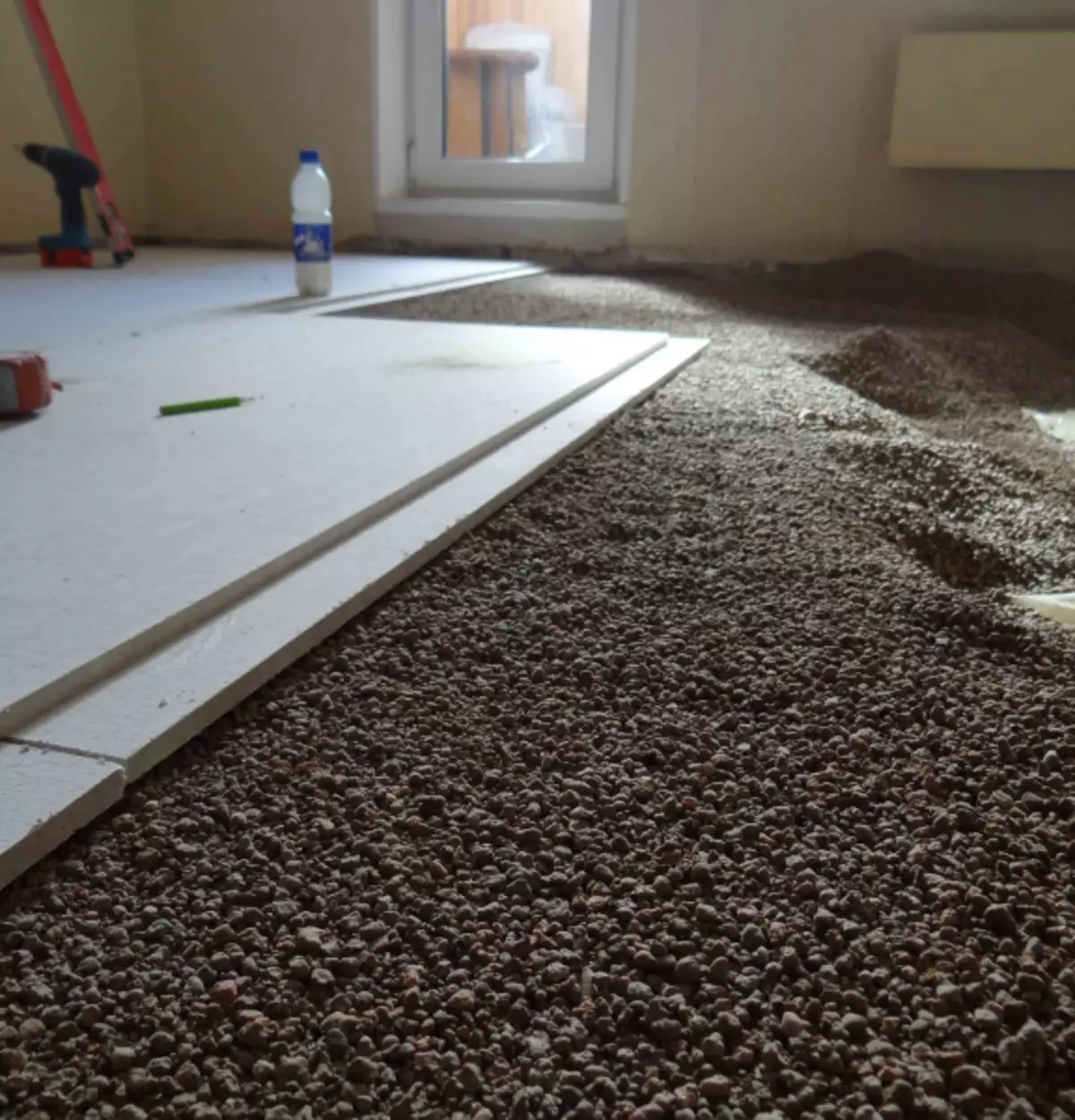
Bulk insulation is usually produced in the form of granules
The bulk formulations are used under the floor tie, or directly under the flooring of the tree. To do this, the carrier formwork is mounted on the floor, in which the insulating composition is covered in the compartments.
It is granular or sand-shaped components that prevent moisture penetration.
The main minus of such technology - the bulk composition will significantly "eaten" the height of the building, because for the effective operation of such an insulation, a thickness is required from 20 to 40 cm.
The use of bulk compounds should be foreseen at the station planning.
Painting isolation
These materials were obtained due to the method of their use. They are applied in two ways - cold and hot. In the first case, compositions made of epoxy resins are used, which are applied by the usual painting brush, and on large areas - roller. On how to qualitatively deceive insulation bathroom, see this video:
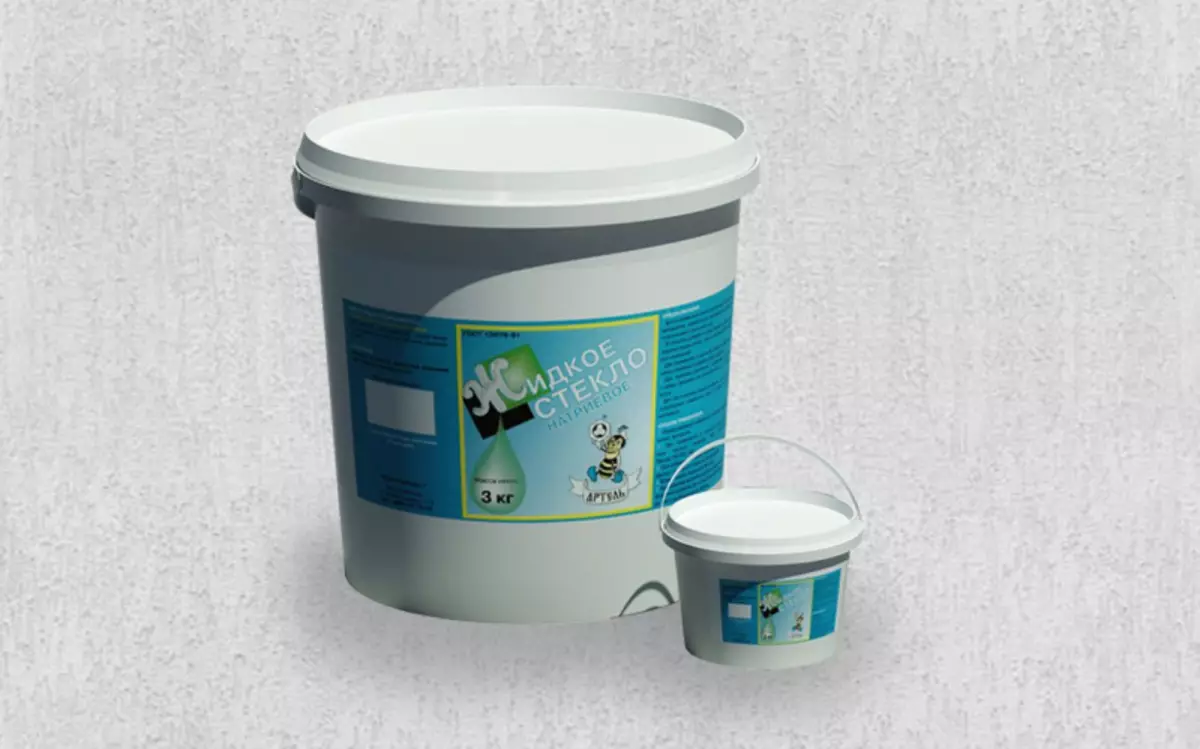
Liquid glass
Liquid glass insulation glass is also applied in a cold form, and the frost occurs under the action of special hardeners added to its composition.
Article on the topic: What wallpaper Select for a narrow room, tips and recommendations
For hot application technology, the compositions are used on a bitumen basis, which are heated before applying to give them yields. The table shows the technical indicators of certain bitumen compositions used for floor coating in the house.
It is processed by coating materials not only the surface of the concrete, but also the lower part of the walls around the perimeter of the room at a height of 20 - 30 cm. Special attention should be paid to the place of docking walls with floor.
Bulk materials
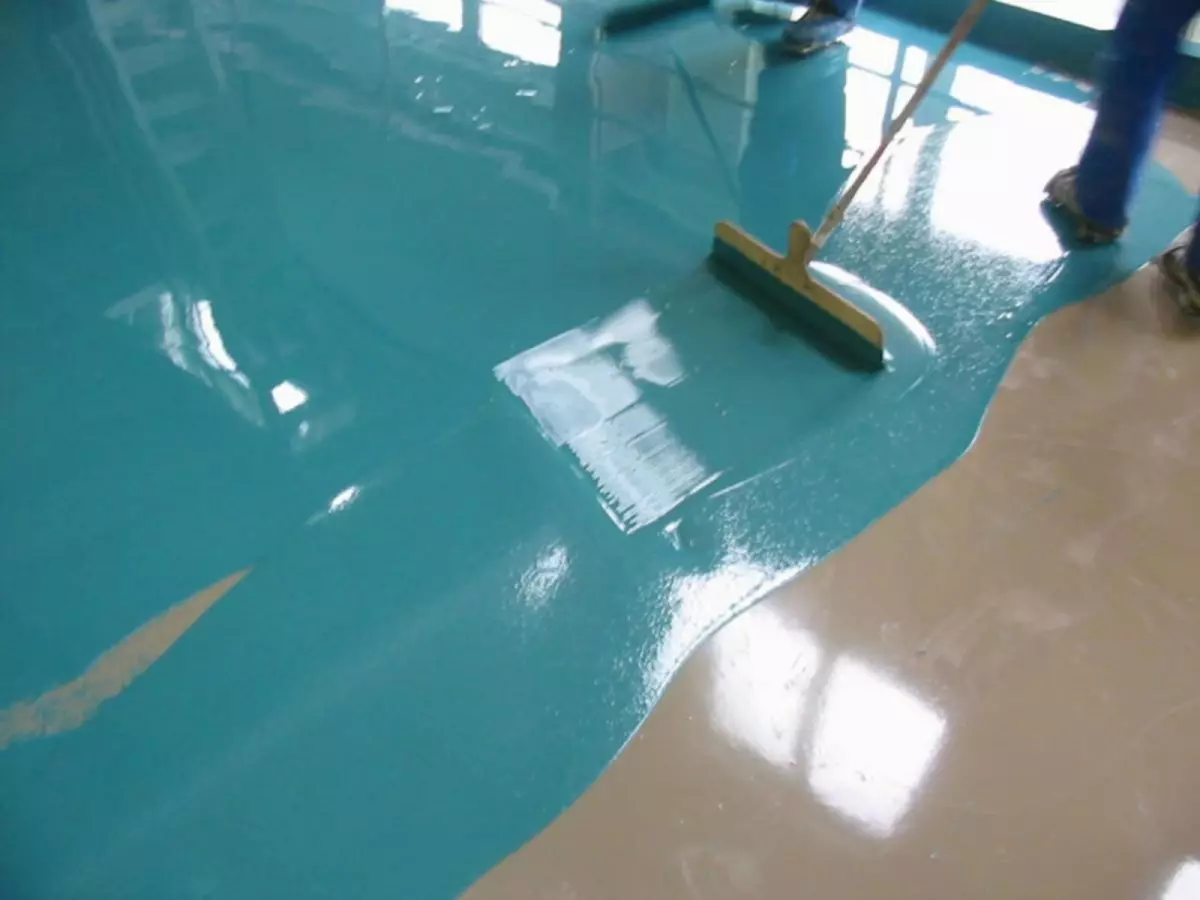
The bulk solution allows you to create a completely insulated monolithic surface
Are one of the varieties of coating waterproofing. They have a liquid consistency, the application of which to the floor is performed by the method of filling and coating walls.
As a result, monolithic isolation is obtained, which completely prevents the penetration of moisture through the overlap.
Liquid waterproofing glass can also be applied to the floor by bulk technology. The only minus of such materials is high cost, at times exceeding the same rolled insulation option.
Phased work of work
Each of the above technologies requires its approach and the use of special tools. Before proceeding with the work, the basis should be prepared.Preparation of floors
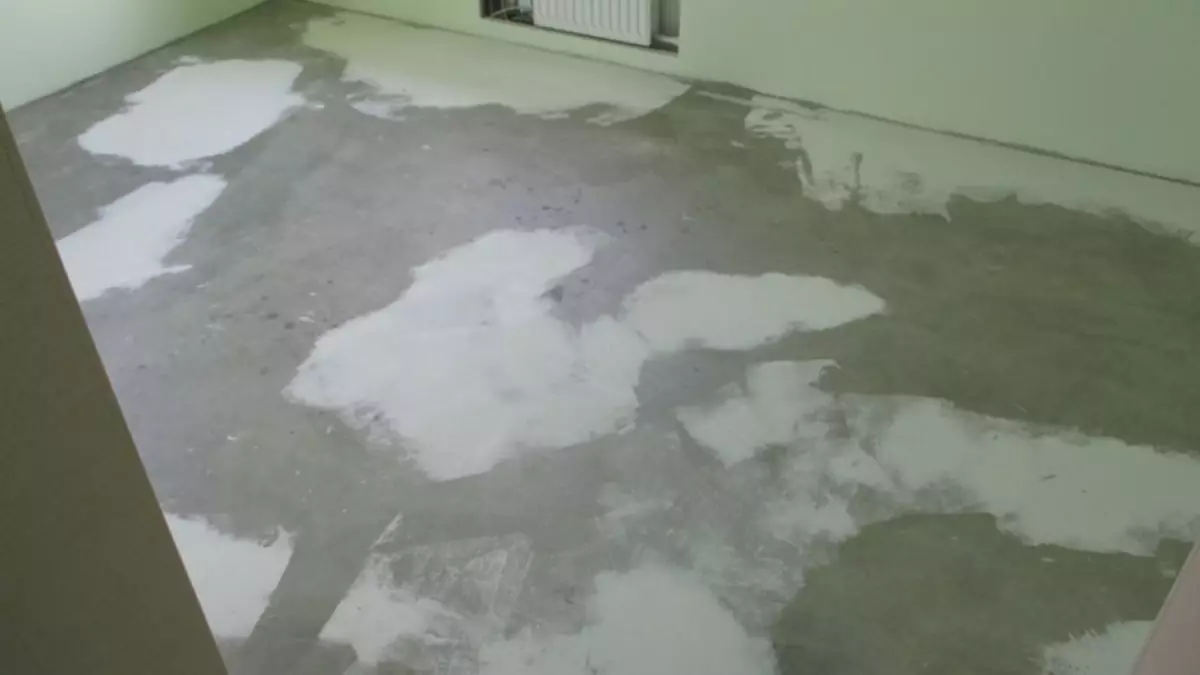
First of all, the concrete base must be carefully stronger from all types of pollution. After that, it is necessary to sharpen or attach all the detected cracks and cracks in the docking places of concrete slabs or in places of the walls of the walls with the floors. This will avoid the penetration of condensate vapors from the following premises for the water-repellent layer.
Before the waterproofing device, it is recommended to secure a special damper tape on the bottom edge of the walls. It is intended to compensate for expansion and narrowing the waterproofing material when the temperature drops.
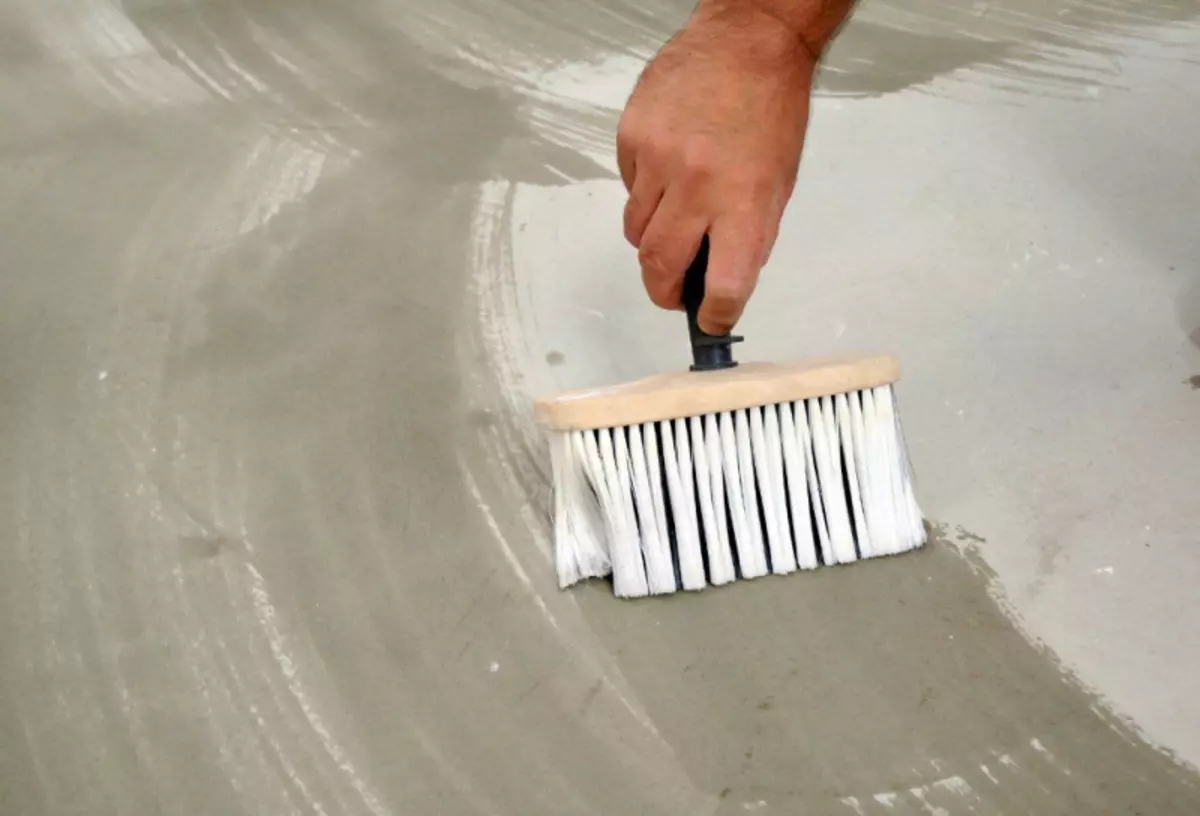
Do not forget about antiseptic primer
Next must be applied to the floor the primer impregnation. It will increase adhesion indicators (hitch) of adhesive or coating compositions with the surface of the floor.
It is also desirable to apply a special impregnation on the carrier surface, which will not allow the mold and mold in the thickness of the floors. Immediately before applying the mastic, you need to remove dust and small construction trash from the surface of the floors.
If you plan to repair interroom partitions in the repair process, then dismantle them should be removed before applying the water-repellent coating. Otherwise, there will be not affected by the insulation of the place.
Installation of rolled pair-hydro insulation
Consider the main stages of the installation of rolled waterproofing. Before applying adhesive insulating materials, it is necessary to thoroughly align the base of the floors. To do this, it is best to apply a liquid composition, the so-called "bulk floors". For more information about the process, see this video:
After preparing the base, which includes the shp can and primer, to the surface of the floors we apply the adhesive composition - bitumen emulsion or polymer mastic. Apply adhesive compositions at all is not necessarily as a solid layer. It is enough to miss the floor in the idea of diagonal intersecting strips.
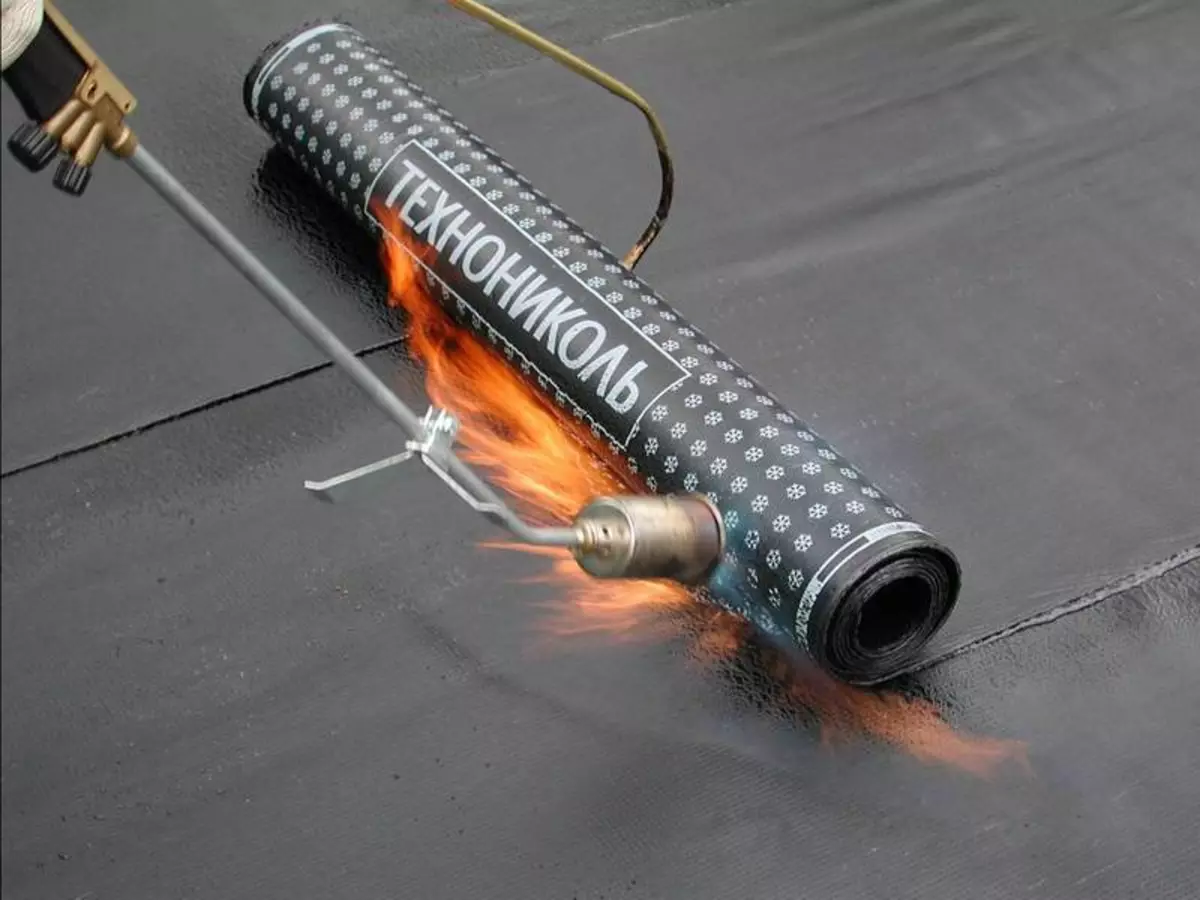
Heating roll, roll it in the desired side
Then, with the help of a gas burner or a construction dryer, heating the edge of the roll to the plastic state and roll it along one of the walls.
The softened insulation edges should be beatened onto a wall with a launch of 10-20 cm. We make the sticker of the next strips of roll insulation with the wall and the adjacent isolation sheet at least 15 cm.
Article on the topic: Decorating the interior: Autumn crafts from straw (38 photos)
Their joints are thoroughly labeled with water-repellent mastic. Isolation sheets in the sticker should be carefully smoothed in order to avoid formation of air bubbles under them.
If you are used by self-adhesive insulation, then after smoothing the sheet is heated by a torch or a powerful construction hairdryer than the softening of the adhesive base and its durable hitch with a floor is reached.
Since rolled waterproofing in most cases is made on the basis of combustible bitumen, when used to heat an open flame burner, fire safety measures should be observed.
For greater efficiency, it is recommended to make sex with water-repellent rolled materials in 2-3 layers, each of which is superimposed by the previous one.
Applying coating waterproofing
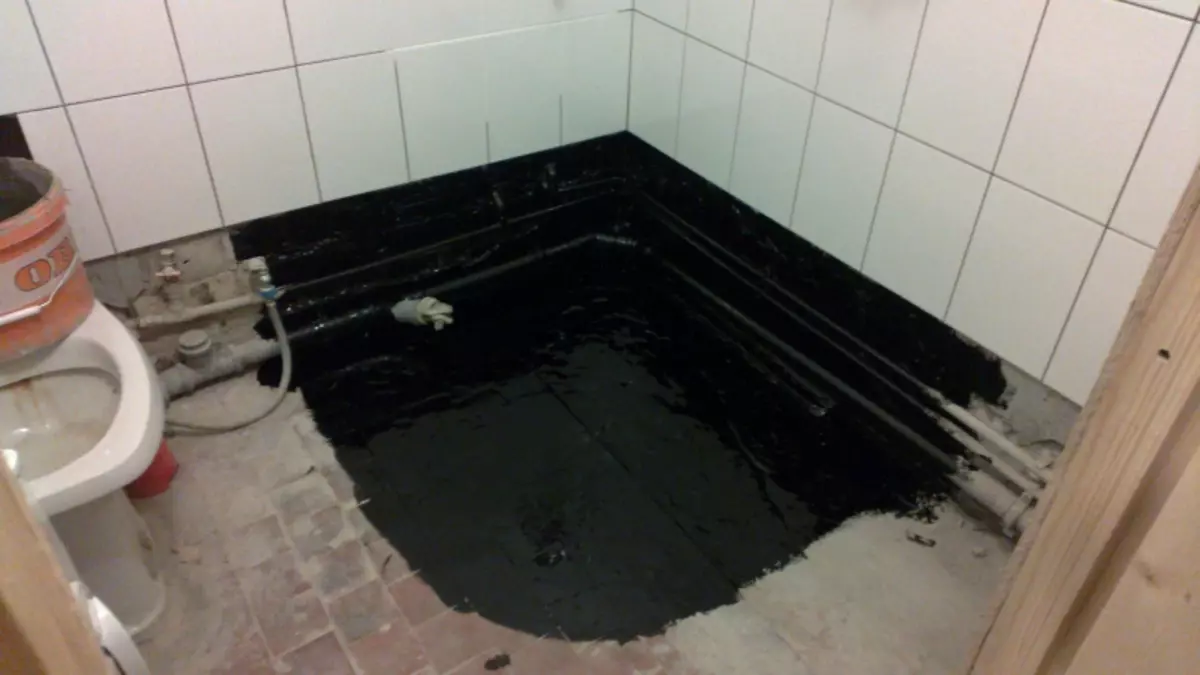
Before applying mastic, clean the surface from garbage
The method of applying liquid compositions is quite simple - for this we will need only a roller or painting brush. Before applying liquid waterproofing, the surface of the floors and walls should be cleaned of dust and small garbage, after which it is primed.
Start the application of the composition follows from the walls. Strace with a brush or roller walls to a height of up to 30 cm from the floor level throughout the perimeter of the room. After that, we proceed to the coloration of the floors. The color of the flooring in the room is desirable to produce for one reception, otherwise there may be leisurely seams between the old and fresh layer of mastic.
Polymer masses are sold in ready-to-use form - they can be applied immediately after opening the packaging container. It belongs to such species of waterproofing liquid glass and other self-solid compositions.
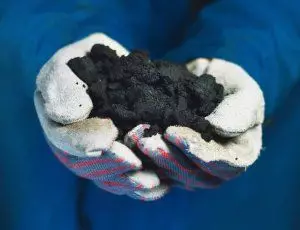
Bitumen - the basis of waterproofing materials
Bituminous compositions before use must be heated to give them plasticity and fluidity. To do this, you can use a construction hairdryer or soldering lamp. Before heating, bitumen mastic should be placed in the metal tank to avoid direct contact with the open flame.
They are applied both "cold" and "hot" compositions in several layers, each after complete drying of the previous layer.
Waterproofing for warm floors
Warm floor systems are increasingly installed in residential premises. Before installing warm floors, the floors should be carried out in mandatory. It will save electrical contacts and other metal structural elements from corrosion and possible closure. All the details of the process are looking in this video:
Insulation in this case, produced in several layers:
- On the base of the floors, a layer of waterproofing is applied.
- A concrete screed is poured over the waterproofing.
- The highlight system is laid on the tie.
- On top of the warm floors, the second layer of the concrete screed is satisfied, or the floor covering is immediately mounted.
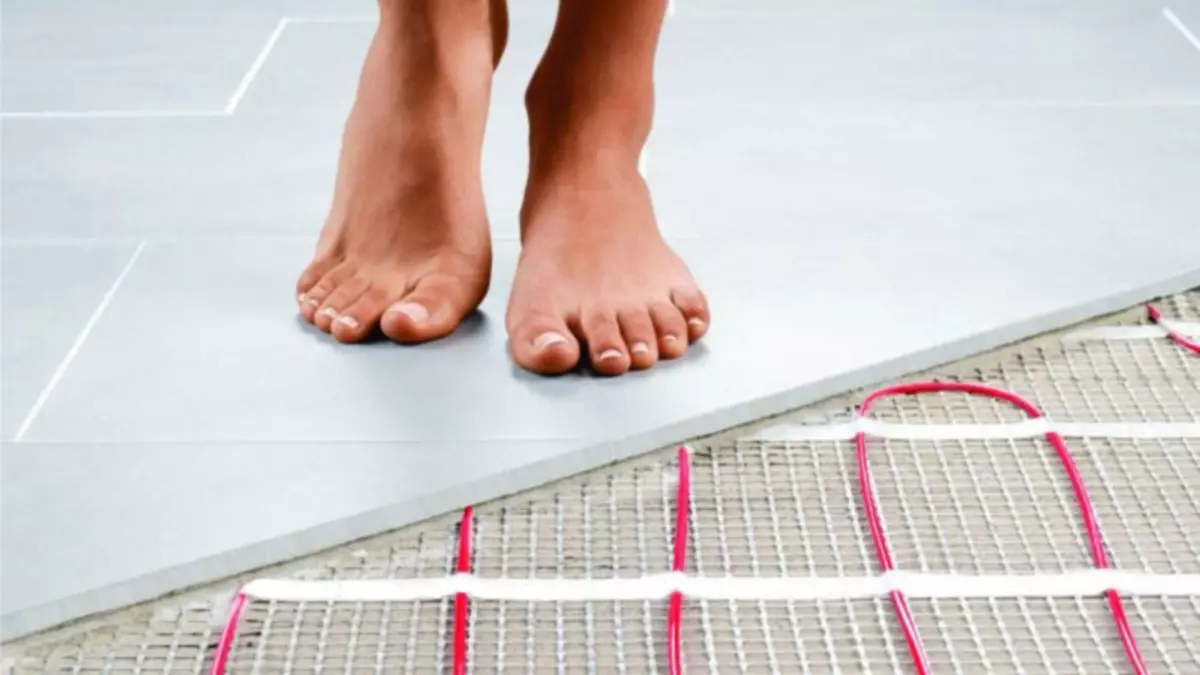
Do not use for insulation heat floors bitumen materials
When used in warm floors, it is not recommended to use water-repellent bitume-based water-repellent compositions. When heating electrical wires of heating, or metal pipes, will heal and bitumen. At the same time, the waterproofing material can not only lose its properties, but it is also possible to release harmful chemical elements into the air.
Seeking through the floor covering, they can in the literal sense of the word to poison life in the inhabitants of the apartment.
